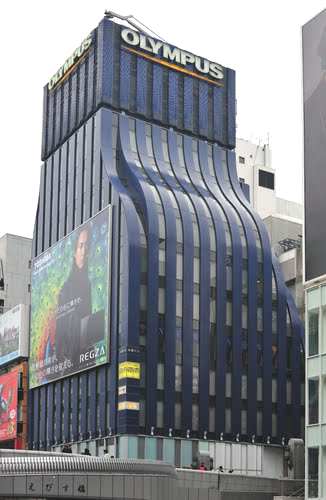 Despite Sony having its own financial woes which have forced the company to sell its NYC headquarters for $1.1 billion and Sony City Osaki building for $1.2 billion, there are other Japanese electronic companies who have fared even worse. Olympus is one of those companies and, had it not been for the cash injections from Sony in the last year, there might not be an Olympus to report about. So what has Sony gained in this equation? By investing $645 million into Olympus, Sony has become the biggest shareholder in the company, controlling just under 11.5% of the company.
Despite Sony having its own financial woes which have forced the company to sell its NYC headquarters for $1.1 billion and Sony City Osaki building for $1.2 billion, there are other Japanese electronic companies who have fared even worse. Olympus is one of those companies and, had it not been for the cash injections from Sony in the last year, there might not be an Olympus to report about. So what has Sony gained in this equation? By investing $645 million into Olympus, Sony has become the biggest shareholder in the company, controlling just under 11.5% of the company.
Cameras and Camcorders
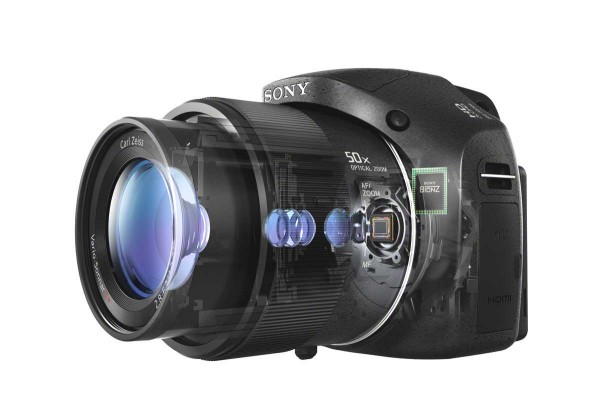
If you’re looking for a beefier camera to sport this Spring but you’re not looking to get into more professional gear like Sony’s NEX and Alpha series, then listen up. For the upcoming season, Sony is updating their higher-end Cyber-shot cameras, starting with the HX300. Here to replace the HX200V, the Cyber-shot HX300 offers 20.4-megapixels, 50X zoom (24-1,200mm equivalent lens) with better stabilization, and a much higher autofocus speed that can focus twice as quickly at telephoto distances than the HX200V. Other features include manual/autofocus, full 1080p recording, and HDMI out. Up next is the pocket-sized WX300 which, due to its size constraints, doesn’t pack the same punch. Still, an 18.2-megapixel sensor, 20X zoom (25-50mm equivalent), autofocus which clocks in at 3.6 times faster that the previous model and Wi-Fi sharing make it a hard unit to pass up. Up next, the even thinner and waterproof TX30.
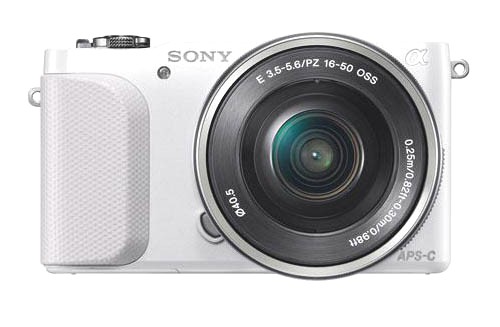
It wouldn’t be a proper Sony camera if pictures and specs of it are not fully leaked prior to the camera’s public announcement. The Sony NEX-3N is no different, here to replace the NEX-F3 as the entry level E-mount camera. While not a lot is known about the camera quite yet, it’s expected to share many of the same traits as the outgoing F3 with a slightly sleeker form factor. After the jump, we have a few more NEX-3N pictures and specs from the F3 to give you a better understanding of the cameras likely capabilities.
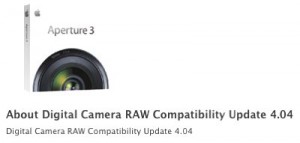
For all you Mac users out there, Apple’s ‘Digital Camera RAW Compatibility Update 4.04’ is out as a free download, adding to it a few new cameras to the list. Most importantly for our readers, Apple is now fully supporting the Sony RX1, the monster Cyber-Shot camera. After the jump, a full list of added cameras.
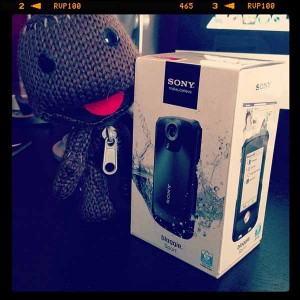 Thanks to our friends at Sony who provided us with the Bloggie Sport in the stylish red none the less which matches our site theme, we can now provide you with another video unboxing and review. The Bloggie Sport which was announced at CES 2012 follows in the footsteps of the Bloggie Live. Unlike its brethren whose equipped with WiFi and is designed for giving Bloggers the option to broadcast live, the Bloggie Sport opts to record locally to its internal 4GB memory in up to 1080p for export to your Mac or PC in the future. However, chances are, if you’re putting the Bloggie Sport to proper use, you won’t be near any WiFi. That’s because the Bloggie Live is designed to be taken on your next bike ride, rock climbing, or kaiaking.
Thanks to our friends at Sony who provided us with the Bloggie Sport in the stylish red none the less which matches our site theme, we can now provide you with another video unboxing and review. The Bloggie Sport which was announced at CES 2012 follows in the footsteps of the Bloggie Live. Unlike its brethren whose equipped with WiFi and is designed for giving Bloggers the option to broadcast live, the Bloggie Sport opts to record locally to its internal 4GB memory in up to 1080p for export to your Mac or PC in the future. However, chances are, if you’re putting the Bloggie Sport to proper use, you won’t be near any WiFi. That’s because the Bloggie Live is designed to be taken on your next bike ride, rock climbing, or kaiaking.
You see, the Bloggie Sport offers a dust-proof casing that can withstand splashes and underwater plunges to depths of up to about 16 feet. If you’re at all like me, chances are that during your last vacation or trip to Disneyland, you we’re a bit paranoid with having your smartphone in your pocket for fear of getting it wet. The Bloggie Sport solves that. The MP4 camera also comes with a shock-proof design that resists drops from up to 5 feet, giving you ease of mine when fumbling around in your pocket for your device. Does the camera live up to its claims? We’ll find out in our review but bellow is our video unboxing of the Sony Bloggie Sport.
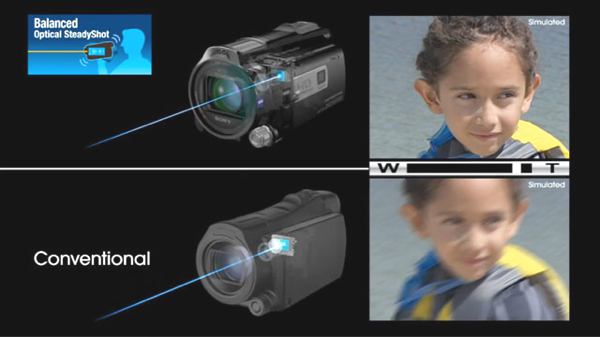
‘Optical SteadyShot’ is a fairly self explaining term that Sony uses on their fleet of Handycam camcorders, starting with their entry level HDR-CX220/B which is priced at $249. The technology as one would expect is designed to reduce shaky video and offer a smoother and less headache prone end result. Once turned on, you simply need to continue recording your video as you normally would, knowing that the camera is taking into consideration your hand movement, an especially great feature with those with a bit of shake in their hand. Even better for parents attending long recitals and soccer games.
Like any technology, Optical SteadShot does have its limitations which can quickly be seen say if you’re walking around as you’re video recording. This can equally be seen at either a soccer game though it tends to pop up more in home videos during a party where the camera is walked from person to person to capture their time. For this very same reason, Sony at developed a more advanced system dubbed ‘Balanced Optical Steadyshot’ which can be found in their higher end series of Handycam camcorders, starting with the HDR-PJ710V for $1,299. Much like the previous system, Balanced Optical Steady Shot is designed to reduce the shaky video though this version goes above and beyond. Sony was able to achieve this by having the cameras lens and sensor nearly float inside of the camera housing, causing only the body to pivot during movement, thus keeping your footage clean.
After the jump, our vide demo of the Sony Balanced Optical SteadyShot from CES 2013 shows you the difference between having the feature on and off on a camcorder.
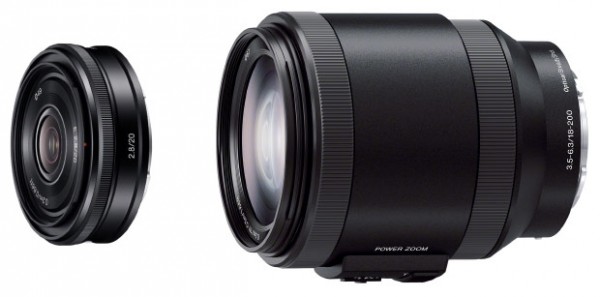
Though the E-mount camera segment is new for Sony, the company has been doing everything it can to grow the line of available lenses. This can prove difficult for any camera manufacture and can be that much more challenging when consumers look at your available line of lenses versus other manufactures and or Sony’s own line of A-mount lenses for their Alpha series. Enter the 20mm f/2.8 pancake and a 18-200mm f/3.5-6.3 OSS powered-zoom optic E-mount lenses that we’re just announced by Sony, growing the total line to 13 E-mount lenses for the NEX series. Now lets talk dates and pricing.
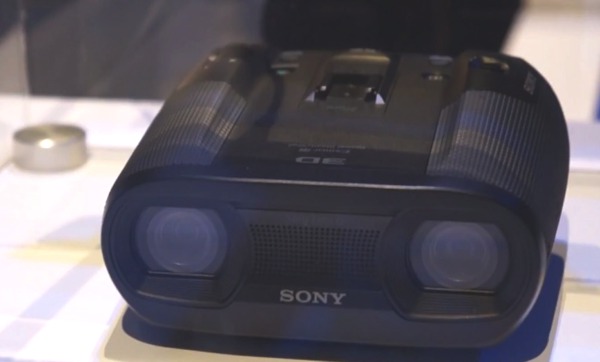
Nearly two years ago, Sony announced a pair of 3D Digital Recording Binoculars, the DEV-3 and DEV-5. Packed with 10x optical zoom, both units are capable of recording 1080p HD video while capturing stills with a 7.1 megapixel camera. It also wouldn’t be Sony without them incorporating their Exmor R CMOS sensors which are designed to provide noise free images, even in low light situations. But once again, this digital recording binocular has a trick up its sleeve—or maybe two tricks. Sony opted to include not one, but two Exmor R CMOS sensors in both the DEV-3 and DEV-5, allowing for native 3D 1080p video recording with dual f/1.8-3.4, 0.5-10x optical zoom lenses, and a pair of 1,227-dot viewfinders. Other features include manual focus, SteadyShot, and Image Stabilization. With no word from Sony since then, we always wondered if these were a one time product but alas we were wrong.
At CES 2013, the 2nd Generation Sony 3D Digital Recording Binoculars was unveiled to the press. No price point or spec difference were given and in fact, the only unit present was inside a glass case. Still, the striking and slimmed down redesign should be a positive sign for techie nature lovers. As our video after the jump shows, despite the unit being a prototype, the final production model shouldn’t differer too much. Our inside sources have also told us to expect a Q1 2013 ship date though that can always change. After the jump, our video preview.
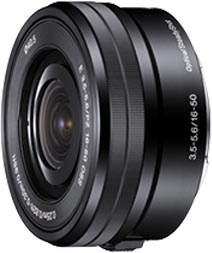 While NEX-6 owners have had the Sony 16-50mm retractable zoom lens for weeks now, the rest of us have to wait till February to get our hands on them. Sony has announced that, come February, the company will release the currently NEX-6 only bundled lens for $349. Like all E-mount lenses, expect full compatibility with NEX cameras like the NEX-5, NEX-C3, NEX-7 as well as Sony’s NEX camcorders. The Sony 16-50mm lens provides a focal range and matching aperture (f/3.5-5.6) found in the Sony 18-55mm lens. Those eager enough for the new compact lens can visit Sony’s online portal for pre-order details.
While NEX-6 owners have had the Sony 16-50mm retractable zoom lens for weeks now, the rest of us have to wait till February to get our hands on them. Sony has announced that, come February, the company will release the currently NEX-6 only bundled lens for $349. Like all E-mount lenses, expect full compatibility with NEX cameras like the NEX-5, NEX-C3, NEX-7 as well as Sony’s NEX camcorders. The Sony 16-50mm lens provides a focal range and matching aperture (f/3.5-5.6) found in the Sony 18-55mm lens. Those eager enough for the new compact lens can visit Sony’s online portal for pre-order details.
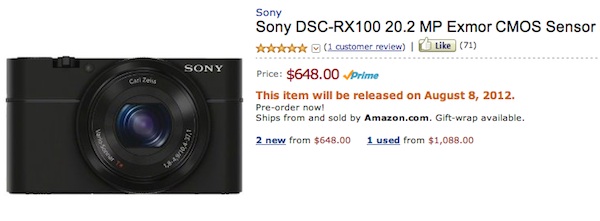
Sony took everyone in the camera industry by surprise when it announced the Cyber-shot DSC-RX100 in early June. Equipped with a 20.2-megapixel (5472 x 3648) Exmor CMOS Low-Light Sensor and full HD 1080/60p video, the RX100 provides the compactness of the Cyber-shot range while giving DSLR quality with a full 1-inch image sensor with 1.8 f-spot, helping you achieve you crisp photos, even in lowlight.
These specs alone help the camera beat out rivals like the Fujifilm X10, and Canon S100 but its not until you see the cameras picture quality next to bigger offerings like Sony’s own NEX-5N when you really begin to realize what the compact camera has to offer. Now, Sony has set a August 8th release day for the $649 priced RX100. After the jump, you can find links to pre-ordering the highly anticipated camera.
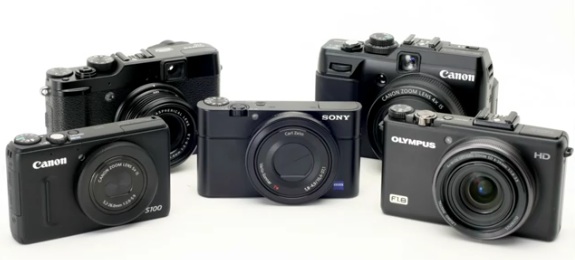
After we published our story on the Sony Cyber-shot RX100, the $649 pocket size camera with a 20-megapixels and 1080p video, a great many of you tweeted us about the cameras price point. While the Cyber-shot line has usually ranged from $100-$500, many were surprised by the cameras higher price which places it in the entry level DSLR price territory and easily into NEX price point with the NEX-F3 being priced at $599 with a 18-55mm lens.
So what gives on the price and how is it justified? In short, Sony was able to provide a full 1-inch image sensor with 1.8 f-spot, helping you achieve you crisp photos, even in lowlight. This helps the RX100 achieve DSLR quality photos while being pocket sized at a higher MP count (20MP versus 16MP of NEX-F3). Others might look towards competitor pocket cameras like the Canon S100 (12.1MP) and Fujifilm X10 (12MP) which already sees the RX100 winning in megapixels. More importantly, it comes back to the 1-inch image sensor and the 1.8 f-spot which help the camera achieve extremely crisp photos and perform marvelously in low light.
The DSC-RX100 ISO (80-6400) also matches the Canon S100 ISO (80-6400) and beats the Fuji X10 ISO (100-3200). Sony also sweeps the max aperture comparison with 1.8 f-spot versus 2.0 for the S100 and X10. After the jump, we have a image sensor chart and sample photos from the RX100.
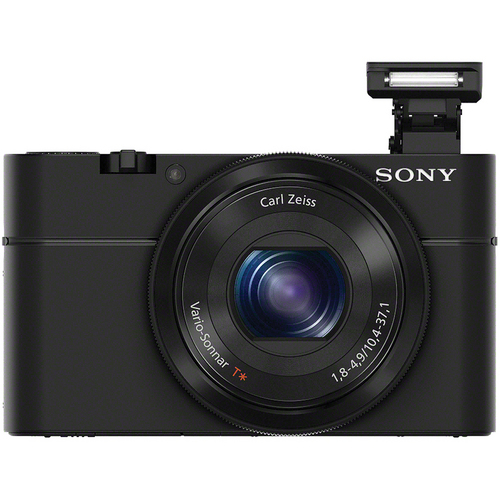
Seemingly out of nowhere, Sony has announced the DSC-RX100 digital camera with a 20.2-megapixel (5472 x 3648) Exmor CMOS Low-Light Sensor and full HD 1080/60p video (AVCHD 2.0 / MPEG-4 AVC (H.264)). The pocket sized camera which we assume is part of the Cybershot family carries a much more simplistic rectangular and sleek design which helps hid the cameras pop-up flash. Shooting in low light shoot also prove to be an easy task with its F1.8 Carl Zeiss Vario-Sonnar T lens, Exmor CMOS image sensor with ISO 125-6400, and refined BIONZ image processor.
The cameras compact design come at the cost of reduced zoom of 3.6x optical zoom (28 – 100 mm) and 7.2x digital zoom. Menu settings and photo playback is made possible on the RX100’s 3-inch Xtra Fine LCD with WhiteMagic technology. The tech which originally debuted on Sony’s smartphones is meant to provide increased visibility under intense sunlight. Other note worth specs include the cameras burst mode with 10fps, RAW capability, and customizable function button which allows you to assign up to seven different functions to the function button for a unique user experience.
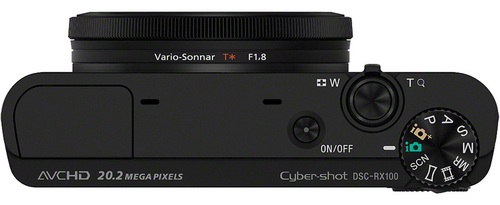
Priced at $649, the RX100 will be available in July. After the jump, the full Sony DSC-RX100 specs await you.
When it comes to doing a review, there are many ways to approach the product at hand. In either written or video form, do you focus on the technical specs? Do you create a video comparison and point out the differences between products, or do you simply use the device, shoot some footage, and let the viewers decide? This was the question I posed to myself when I wanted to cover the Sony Bloggie Live, the latest flagship MP4 camera. The basics of the Bloggie Live include full HD 1080p (30fps) and 720p (60/30fps) video, a 12.8-megapixel camera, 3-inch touchscreen with updated UI compared to the Sony Bloggie Touch with Wi-Fi capabilities, allowing you to stream your footage live. The Bloggie Live is also Mac/PC compatible, making it very easy to import video to your OS of choice.
Of course, as I said, there are many ways to review the Bloggie Live. We’ve already done a comparison video of the Sony Bloggie Live against last year’s champion, the Bloggie Touch. In our video shootout challenge, the two cameras recorded identical footage and we placed the videos side by side, giving you a proper comparison of the two MP4 cameras video quality. This of course led to a question: what if we shoot a lot 1080p footage (scalable of course to 720p and lower) and let you sit back and enjoy it with some lively piano music and really decide for yourself? We of course will provide a full written review in the near future to talk about the nitty gritty of the camera, in which case, we will update this post with a link. After the jump, our video montage of the Sony Bloggie Live.
Now that Sony has officially announced the NEX-F3, we can take a closer look at what the latest e-mount camera has to offer and analyze how it differs from its predecessor, the NEX-C3. While maintaining the same $599 price for body and 18-55mm lens, the new entry NEX model has quite a bit to offer. A new 16.1-megapixel APS-C sensor in place, offering a 16,000 ISO versus the NEX-C3 which maxed out at 12,800 ISO. The NEX-F3 is also capable of filming at 1920 x 1080 videos at 60fps interlaced or 24fps progressive where once again, the NEX-C3 fell short to just 720p. Plenty more differences for you listed after the jump.

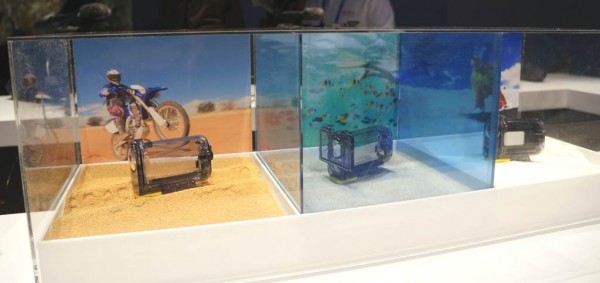
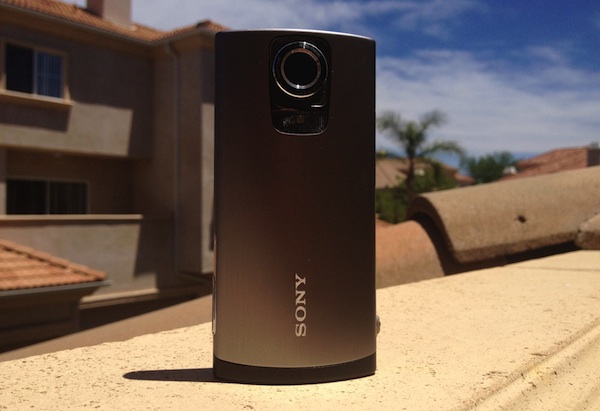
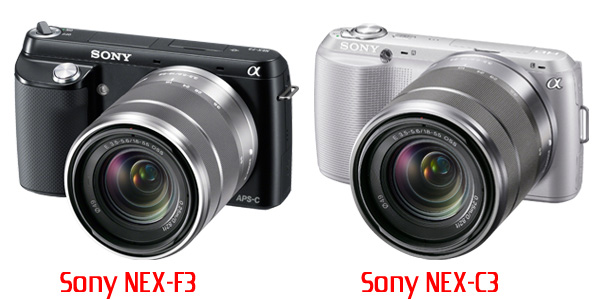
You must be logged in to post a comment.